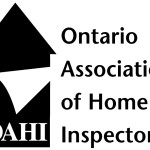
If you are not organized, buying a home in a sellers’ market can be a challenging and frustrating experience. You should be prepared to move quickly once you find a home you are interested in. Any bumps or delays significantly reduce the chances of a successful offer.
A good starting point is to have all your ducks in a row before you even start looking at homes. This means talking with real estate agents, mortgage brokers, lawyers, insurance brokers, and most importantly, selecting your home inspector even before stepping foot in a house. I would also recommend reading my blog posts on “Home Buying Like a Home Inspector”, & possibly “Buying a Century Home”. These will guide you through looking at homes through an inspector’s eyes.
Prior to making an offer on a home it is recommended to follow up with your home inspector to determine their schedule over the next week and maybe even book a tentative appointment. Having an inspection clause that is less than three days long certainly makes your offer more attractive.
Pre Offer Inspections
If you are purchasing a particularly popular home, you may choose to waive your inspection clause all together. This certainly doesn’t mean you can’t assess the condition of the property, but you will have to schedule an inspection prior to making your offer. A pre inspection gives you the best of both worlds and allows you to understand your investment before you own it. If a seller won’t allow pre offer inspections, this could be a red flag as to the condition of the house.
Partial Inspections
Due to the hot market, partial pre-inspections have become a new service within the industry. These inspections are typically about an hour long and are extremely limited in scope. I would caution against having partial inspections for a number of reasons. What is not covered can become a very expensive surprise when you take ownership. Items normally not included are: basement leakage or moisture intrusion, plumbing, electrical distribution, heating distribution, air conditioner, windows, decks, exterior finishes, proper structure inspection, a written report, and much more. A thorough home inspection is a process of looking for a needle in a haystack. The best way to find the major deficiencies is to go through the entire house. For example, to inspect the structure we need to look over every inch of the home looking for masonry/foundation cracking, door & window operation, floor slope, and rafter/joist/beam condition. It can often be a number of little deficiencies that lead me to find the more important ones. Lastly, partial inspections are a poor value. You will pay approximately 50% to 70% of the regular fee for less than 20% of the inspection.
Pre Listing Inspections
If you’re selling your home you should consider having pre listing inspection completed. A pre listing inspection allows buyers to feel more comfortable making their best offer. This can increase the number of offers and potentially raise the value of your home. It also reduces your liability by being upfront about the condition of your home. When your buyer takes possession of the house, there will be less unexpected surprises and fewer potential lawsuits.
Post Purchase Inspection
If you have purchased a home without an inspection, a post purchase inspection will help plan your maintenance costs and uncover any developing problems. For many deficiencies early correction may reduce the amount of damage caused and the associated repair costs. This also allows you to balance cosmetic renovations like bathrooms and kitchens with more practical maintenance items like shingles and furnaces.


